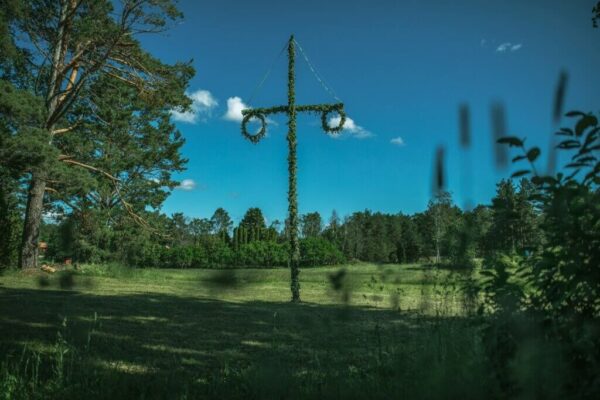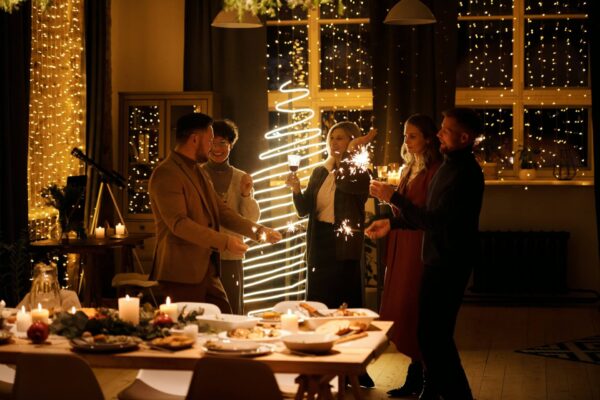As in every other country and with every nationality, the Swedes celebrate a few holidays throughout the year. Festivals in Sweden are known for their traditions and customs, the associated decorations and the special community and cheerfulness. While some of the public holidays we are familiar with are also celebrated in Sweden, others hide exciting stories and unique customs of Swedish culture. Get to know the Swedish public holidays and the good humour of the Swedes!
Official and non-working public holidays
If you are planning a trip to Sweden, the official and therefore non-working days are particularly interesting. Here, most shops and many public institutions and sights are closed or only have shortened opening hours. Thus, you can feel the peace and cheerfulness of the Swedes on such a day and perhaps even celebrate with them.
- 1. January – New Year (Nyårsdagen)
- 6. January – Three Wise Men (Trettondedag jul)
- 2 days before Easter – Good Friday (Långfredagen)
- First day after Easter – Easter Monday (Annandag påsk)
- 30. April – Walpurgis Night (Valborgsmässoafton)
- 1. May – Labour Day (Valborg, Första maj)
- 21. May – Ascension Day (Kristi himmelfärds dag)
- 49 days after Easter – Whitsunday (Pingstdagen)
- 6. June – Swedish National Day (Sveriges nationaldag)
- Saturday between 20 and 26 June – Midsummer Day (Midsommardagen)
- 1. November – All Saints’ Day (Alla Helgons dag)
- 24. December – Christmas Eve (Julafton)
- 25. December & 26 December – 1st and 2nd Christmas Day (Juldagen & Annandag jul)
- 31. December – New Year’s Eve (Nyårsafton)
Traditional Swedish holidays and festivities
St Knuts Day
St. Knut’s Day, known as tjugondedag jul or tjugondag Knut in Swedish, takes place every year on 13 January. Over here, “Knut” became known primarily through the furniture store IKEA, which advertises the disposal of the Christmas tree and discounts at the beginning of the year. In fact, St Knut’s Day is dedicated to St Knut IV and marks the 20th and therefore the last day of the Christmas season. This tradition applies not only to Sweden, but also to Norway and Finland. In contrast to the traditional 13 days of Christmas in Christianity from 25 December to 6 January (Three Kings’ Day), the Christmas season in Scandinavia therefore lasts 20 days.
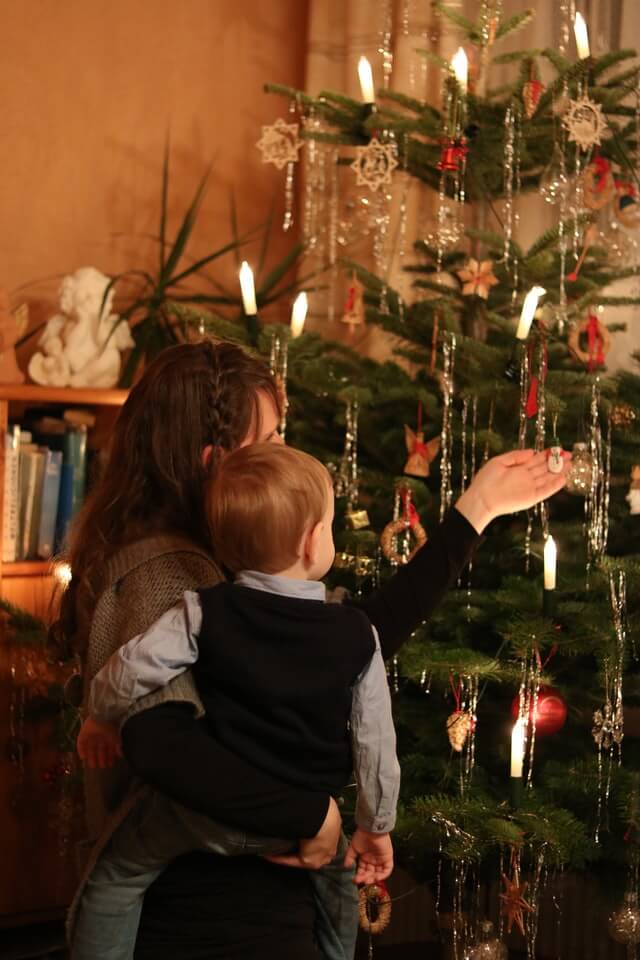
Saint Knut IV (approx. 1040 – 1086 AD) was a Danish king who was canonised after his death and is considered the patron saint of Denmark. It is still a matter of debate whether he ordered the Christmas period to be extended or whether he died on this day. It is also not known why the tradition was passed on to the other three Scandinavian countries.
On St Knuts Day in Sweden, the candles and decorations are traditionally taken down from the Christmas tree, which is then removed from the house. In the 20th century, it was even thrown out of the window, while being accompanied by singing and dancing. The associated ritual of the julgransplundring is particularly enjoyable for children, as the sweets left over from the festivities, some of which also decorated the tree, are plundered. In some towns, the Christmas lights are switched off on this day as well.
Vasaloppet/”Vasa race”
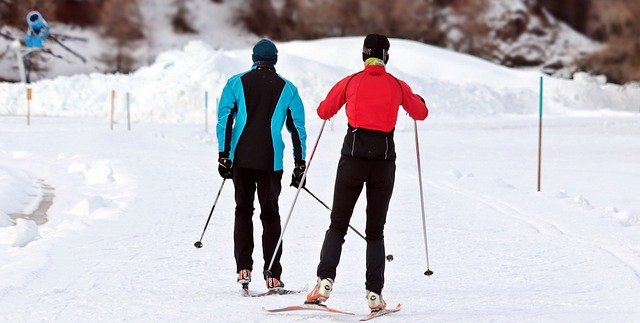
The Vasa Race, or Vasaloppet in Swedish, is internationally recognised and is one of the largest cross-country skiing events in the world. Since 1922, the ski marathon has been held on the first weekend in March every year on the 90-kilometre Vasaloppsleden between the towns of Sälen and Mora in Dalarna, Sweden. It has now become a kind of second Swedish bank holidays, where it is worth watching the 16,000 or so participants. The event is also broadcast on Swedish television.
The tradition of the annual cross-country ski race can be traced back to the nobleman and later Swedish king Gustav Eriksson Vasa, who fled on skis through Dalarna from the Danish king’s soldiers in 1521. However, the idea for the event only came about in 1922.
Easter in Sweden
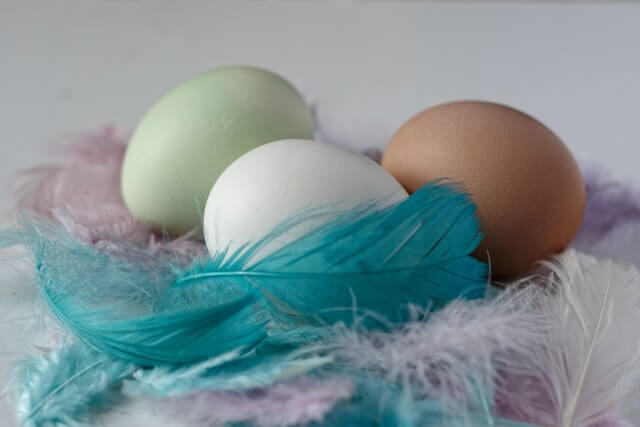
In Sweden, Easter (påsk) is celebrated in a similar but slightly different way to the UK. Easter is combined with pagan traditions here: According to belief, the Easter witches (påskkärring) set out on the night from Maundy Thursday to Good Friday. In the countryside, many Easter fires are lit to drive away the witches.
People will eat various sweets, the påskgodis. However, these are not hidden together with the Easter eggs by the Easter bunny and searched for by the children. Instead, the children dress up as Easter witches and go from door to door on Easter Saturday to collect the sweets. The eggs are traditionally brought by the rooster.
Just like us, however, Swedes celebrate with their families or go on holiday together – preferably to a holiday home in the countryside. Hard-boiled eggs also end up on the Easter table in Sweden. However, these are cut in half and served with mayonnaise and prawns. Fish, especially salmon and herring, and roast lamb are served as the main course. Colourful feathers are a traditional Swedish Easter decoration.
Walpurgis Night
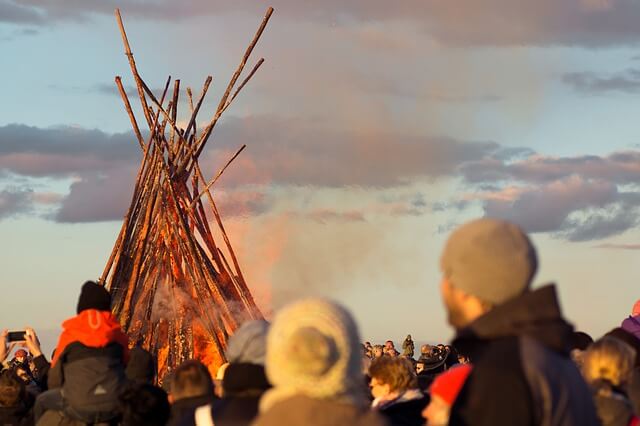
Another pagan custom is Walpurgis Night, which is called Valborgsmässoafton in Sweden. The festival on 30 April marks the end of the long Swedish winter and the arrival of spring. Similar to Easter, large bonfires are lit everywhere to bring people together and drive away the witches. Traditionally, old objects are collected and burnt, accompanied by singing and barbecuing. There is also a lot of drinking, as the next day is a day off on 1 May.
Walpurgis Night is particularly celebrated in Sweden’s student towns, as the day coincides with the end of term and welcomes the holidays. Fireworks are often organised as well.
Swedish National Day
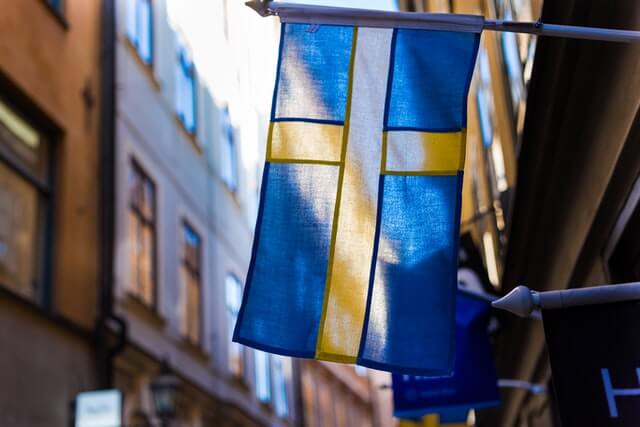
The Swedes celebrate their annual bank holidays, or National Day, on 6 June. It is also known as Flag Day, as the national flag is flown in many places on this occasion. It has only been a non-working day since 2005 and replaced Whit Monday, which has been a normal working day ever since.
The holiday highlights the country’s independence, as Gustav Wasa was appointed King of Sweden on 6 June 1523 and a new and more modern constitution was signed on the same day in 1809.
On this day, a festival is held at Stockholm’s Skansen open-air museum, which is attended by the Swedish royal couple. In the city itself, there are also parades around Gamla Stan with music, food and drink. It is therefore well worth travelling to Stockholm for National Day.
Midsommar
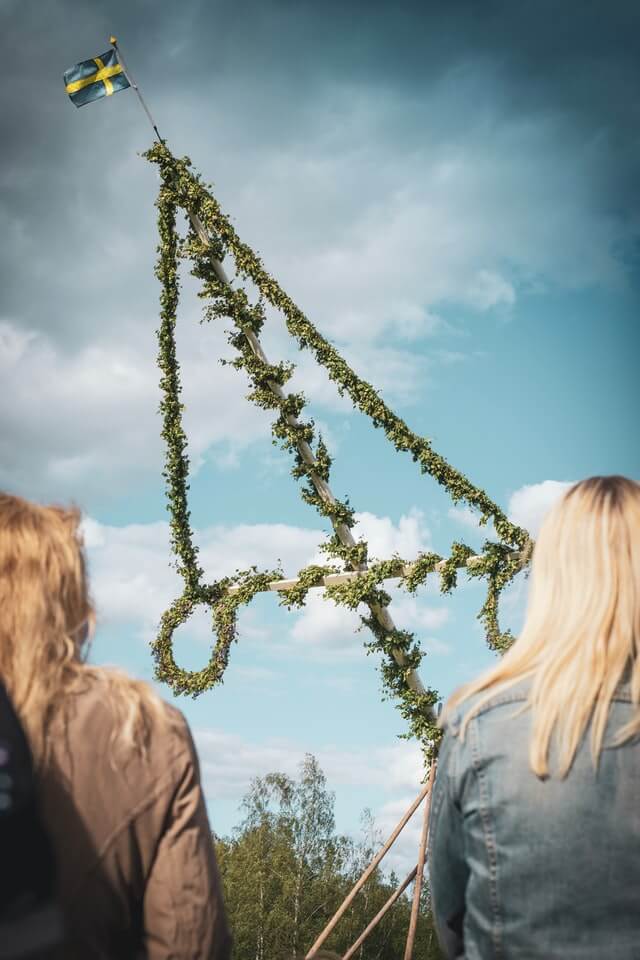
Midsommar, or Midsommardagen, is probably Sweden’s best-known festival and an official public holiday. Together with Christmas, it is also the most important holiday for the Swedes themselves. It always falls on a Saturday between 20 and 26 June, during the summer solstice and therefore is the longest day of the year. In parts of Sweden, it doesn’t get dark at all and the party goes on until the early hours of the morning.
The celebrations with friends, family and neighbours take place outside when the weather is suitable, for example in city parks. Swedes share a special closeness to nature, which is particularly evident on this day. In the past, people believed in magical beings and healing plants. To this day, a kind of maypole is traditionally erected in the countryside and people dance around it. The so-called midsommarstång or majstång is a trunk decorated with leaves and flowers. Many games are played by young and old. The wooden game Kubb is particularly popular and well-known.
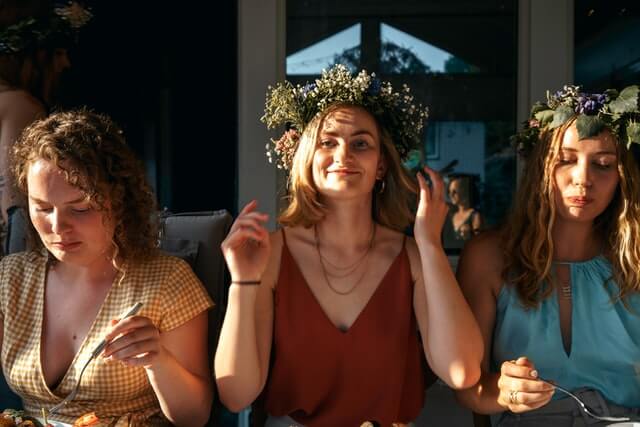
Of course, food and drink play an important role at Midsummer. A lot of schnapps is drunk and the Swedes sing a few of the many old drinking songs to go with it. The menu traditionally consists of färskpotatis, the first young potatoes prepared with dill, and pickled herring, salmon or köttbullar. For dessert, the Swedes serve fresh strawberries, for example with cream or as a cake (jordgubbstårta).
The clothing needs to be appropriate for this festival: Many women and girls wear white or flowered dresses. In some regions of Sweden, traditional costumes are worn. The wreath of flowers in the hair is a symbol of fertility.
Nobel Day
Since 1901, Nobeltag or Nobeldagen on 10 December has been a special day. As the name suggests, this is when the Nobel Prizes for medicine, physics, chemistry and literature are awarded in Stockholm’s magnificent concert hall. Afterwards, the Nobel Banquet takes place in Stockholm’s Stadshuset.
The national flag is hoisted throughout the country and small, private Nobel celebrations are organised everywhere, where the event can be followed live on television.
Lucia Festival
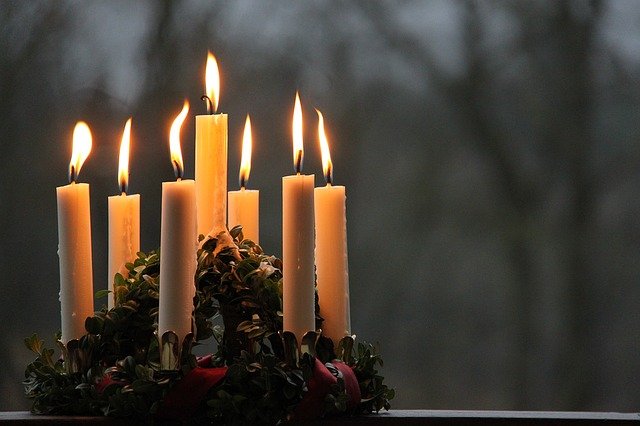
The annual Lucia Festival, or Festival of Lights, kicks off the Swedish Christmas celebrations in December, on 13 December to be precise. In contrast to Midsommar, the shortest day of the year and the winter solstice are celebrated here. The fact that the festival takes place on 13 December dates back to the time before the calendar reform. According to today’s calendar, it should actually be 21 or 22 December.
Although it is not an official holiday in Sweden, it is a traditional festival in honour of Santa Lucia or Saint Lucia, the Queen of Lights, who is said to bring light into the dark days. On the morning of Lucia Day, parades and processions take place all over Sweden, which are particularly popular with children. One of the girls is allowed to play Lucia and wear a white dress with a red silk ribbon tied around her waist and a crown of burning candles and lingonberry branches. She is followed by other girls or star boys as well as gingerbread men and elves. They all sing the Christmas Lucia songs together in a choir. Traditionally, Lucia sets off to wake the family and bring them a breakfast of Swedish mulled wine (glögg), the typical saffron-flavoured Christmas biscuits, lussekattern, and pepper rolls.
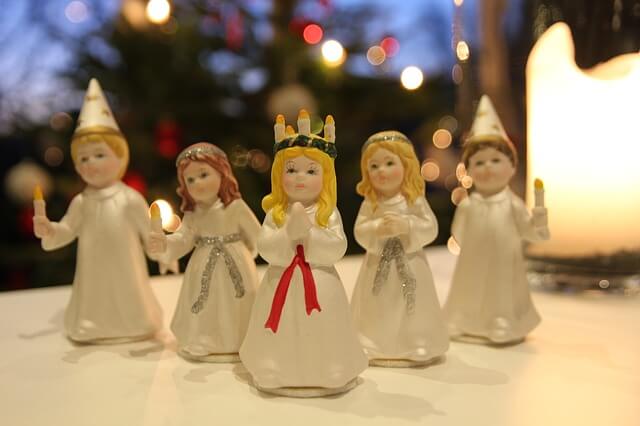
Sometimes the festivities also take place in the church or continue in the kindergarten or school after the parade. The custom is also widespread in Denmark, Norway and Finland.
Christmas in Sweden
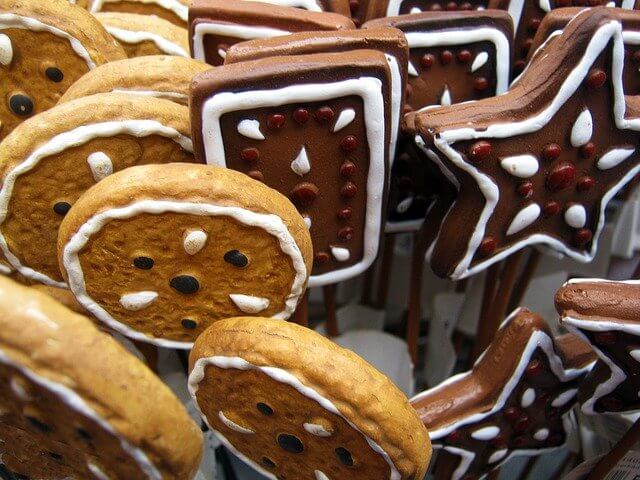
The Swedes’ favourite festival is Christmas (jul), for which they start preparing on Lucia Day. The Advent season is accompanied by numerous Christmas markets in the cities, the Christmas markets in Stockholm or Gothenburg are particularly recommended. Here you can enjoy delicious Swedish punch and various pastries. Then comes the day before Christmas Eve, for which the Swedes even have their own name: Lillejulafton, when the Christmas tree is traditionally put up, decorated by the whole family and the food and presents are prepared. The evening of 23 December is called Uppesittarkväll.
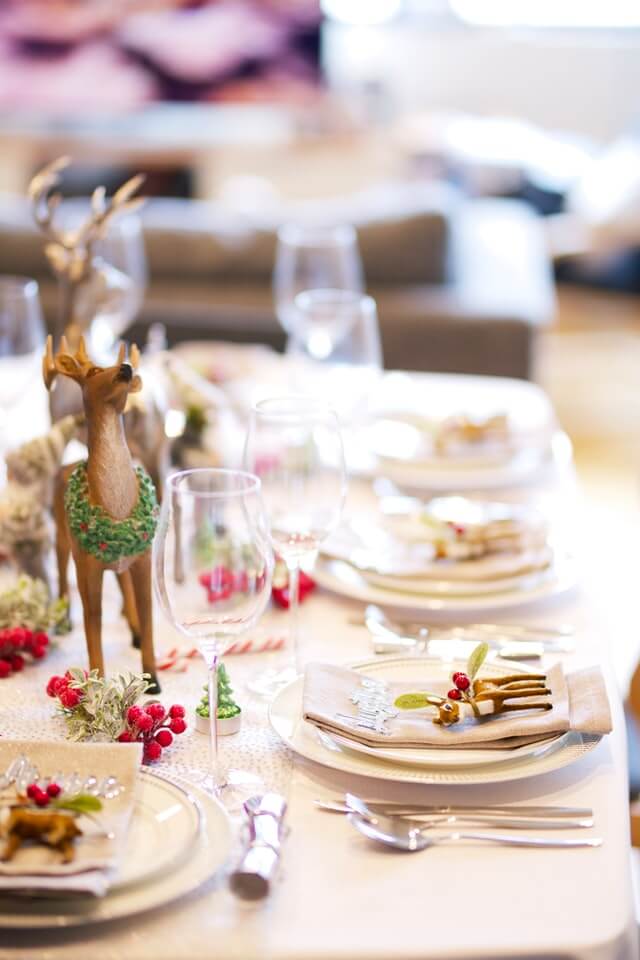
Swedish Christmas is characterised by lavish decorations, numerous Christmas carols, a happy time with the family and good food. On the tree hangs the so-called julbock, a small goat made of straw, which goes back to a long Scandinavian tradition. The Christmas festive table is called a julbord. It includes, for example, the Swedish Christmas ham, julskinka, as well as various other fish and meat specialities. Janssons Frestelse, a potato casserole with anchovies, is served as a side dish.
Just like in Germany, for example, presents are distributed on Christmas Eve, 24 December. However, they are not delivered by Father Christmas or the Christ Child, but by a Christmas elf called Tomte-Nisse. The children recite poems and typical Swedish Christmas rhymes by the Christmas tree.
